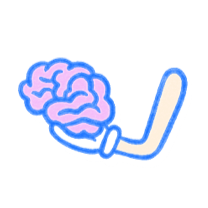CPCE Study Guide: Overlapping Theories & Terminology Made Easy
Preparing for the CPCE? One of the trickiest parts is distinguishing between counseling theories that sound similar or seem to overlap. This guide will help you clearly differentiate between some of the most commonly confused theories using real-world examples you can remember on exam day.
CBT vs. REBT
Both are cognitive-behavioral therapies that focus on changing unhelpful thoughts and behaviors, but they differ in style and philosophy.
Cognitive Behavioral Therapy (CBT)
- Core idea: Our thoughts influence feelings, which influence behaviors.
- Goal: Identify and reframe distorted thoughts to improve emotions and behaviors.
- Style: Collaborative, structured, and skills-focused.
- Real-world example: A client with social anxiety learns to challenge the thought “Everyone will laugh at me” and practices new behaviors like initiating small talk.
Rational Emotive Behavior Therapy (REBT)
- Core idea: It’s not just events, but our irrational beliefs about those events that lead to distress.
- Goal: Dispute and replace irrational beliefs (e.g., “I must be liked by everyone”) with rational alternatives.
- Style: Directive, confrontational, sometimes humorous.
- Real-world example: A client says “I can’t stand making mistakes.” The REBT therapist disputes this with: “Can’t stand it—or just don’t like it?”
Existential vs. Person-Centered Therapy
Both are part of the humanistic tradition, emphasize authenticity, and value the therapeutic relationship, but they differ in focus and tone.
Person-Centered Therapy (Carl Rogers)
- Core idea: People have a natural tendency toward growth and self-actualization.
- Therapist’s role: Provide unconditional positive regard, empathy, and genuineness.
- Real-world example: A client explores their identity while the therapist offers support without judgment or direction.
Existential Therapy
- Core idea: Life involves freedom, choice, and responsibility, but also anxiety, isolation, and death.
- Therapist’s role: Help clients confront existential themes and find personal meaning.
- Real-world example: A client feeling lost after retirement is guided to explore purpose, mortality, and freedom to create new meaning.
Gestalt vs. Psychodynamic Therapy
These two share roots in insight-oriented approaches but differ in process and focus.
Gestalt Therapy (Fritz Perls)
- Core idea: Focuses on here and now, raising awareness of thoughts, emotions, and body sensations.
- Therapist’s role: Create experiments (e.g., empty chair technique) to increase self-awareness and integration.
- Real-world example: A client practices talking to a version of their younger self in the empty chair to process unresolved feelings.
Psychodynamic Therapy (Freud, Jung, Adler, etc.)
- Core idea: Problems stem from unconscious conflicts, often rooted in childhood experiences.
- Therapist’s role: Interpret transference, dreams, and defense mechanisms.
- Real-world example: A client repeatedly ends relationships and explores how their early attachment to a distant parent influences their behavior.
Test Your CPCE Knowledge With Pocket Prep
Pocket Prep’s CPCE® Prep gives you access to expertly written questions, detailed explanations, and helpful progress tracking tools — all backed by learning science. Get started today and feel confident on exam day!

